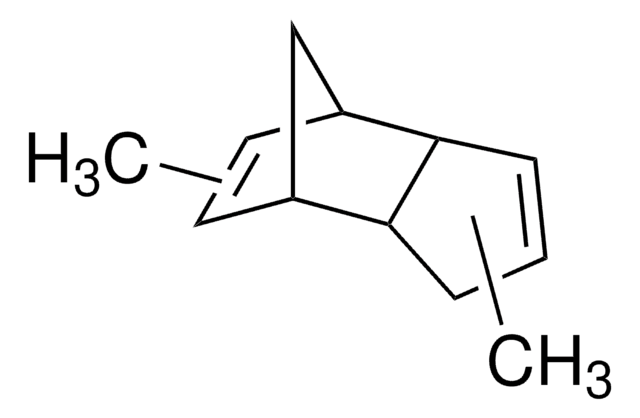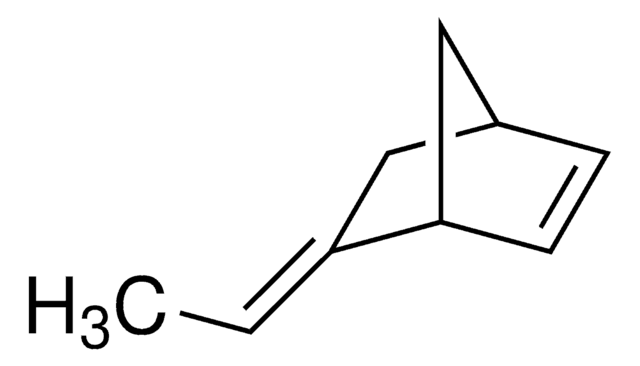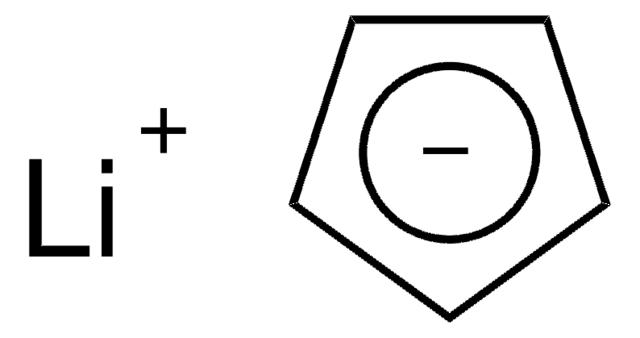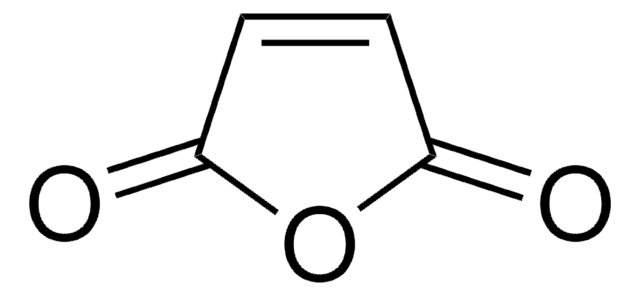454338
Dicyclopentadiene
contains BHT as stabilizer
Synonyme(s) :
4,7-Methano-3a,4,7,7a-tetrahydroindene, Cyclopentadiene dimer, DCPD
About This Item
Produits recommandés
Contient
BHT as stabilizer
Niveau de qualité
Point d'ébullition
170 °C (lit.)
Pf
33 °C (lit.)
Densité
0.986 g/mL at 25 °C (lit.)
Chaîne SMILES
C1C=CC2C3CC(C=C3)C12
InChI
1S/C10H12/c1-2-9-7-4-5-8(6-7)10(9)3-1/h1-2,4-5,7-10H,3,6H2/t7-,8+,9?,10?/m0/s1
Clé InChI
HECLRDQVFMWTQS-AFWXGSBKSA-N
Vous recherchez des produits similaires ? Visite Guide de comparaison des produits
Catégories apparentées
Description générale
Application
- In the preparation of CF/p-DCPD ((carbon fiber/ poly-dicyclopentadiene) composites by VARTM (vacuum-assisted resin transfer molding) process.
- In the preparation of η5-cyclopentadienyltris(dimethylamido)zirconium catalyst.
- In the synthesis of cellulose – maleic anhydride– dicyclopentadiene copolymer matrix by free radical polymerization.
Caractéristiques et avantages
- Low shrinkage
- Cost-effective
- Reduced emissions of styrene
- Fast curing in thin layers.
Mention d'avertissement
Danger
Mentions de danger
Classification des risques
Acute Tox. 2 Inhalation - Acute Tox. 4 Oral - Aquatic Acute 1 - Aquatic Chronic 1 - Eye Irrit. 2 - Flam. Liq. 3 - Skin Irrit. 2 - STOT SE 3
Organes cibles
Respiratory system
Code de la classe de stockage
3 - Flammable liquids
Classe de danger pour l'eau (WGK)
WGK 3
Point d'éclair (°F)
89.6 °F - closed cup
Point d'éclair (°C)
32 °C - closed cup
Équipement de protection individuelle
Eyeshields, Faceshields, Gloves, type ABEK (EN14387) respirator filter
Faites votre choix parmi les versions les plus récentes :
Déjà en possession de ce produit ?
Retrouvez la documentation relative aux produits que vous avez récemment achetés dans la Bibliothèque de documents.
Les clients ont également consulté
Notre équipe de scientifiques dispose d'une expérience dans tous les secteurs de la recherche, notamment en sciences de la vie, science des matériaux, synthèse chimique, chromatographie, analyse et dans de nombreux autres domaines..
Contacter notre Service technique














